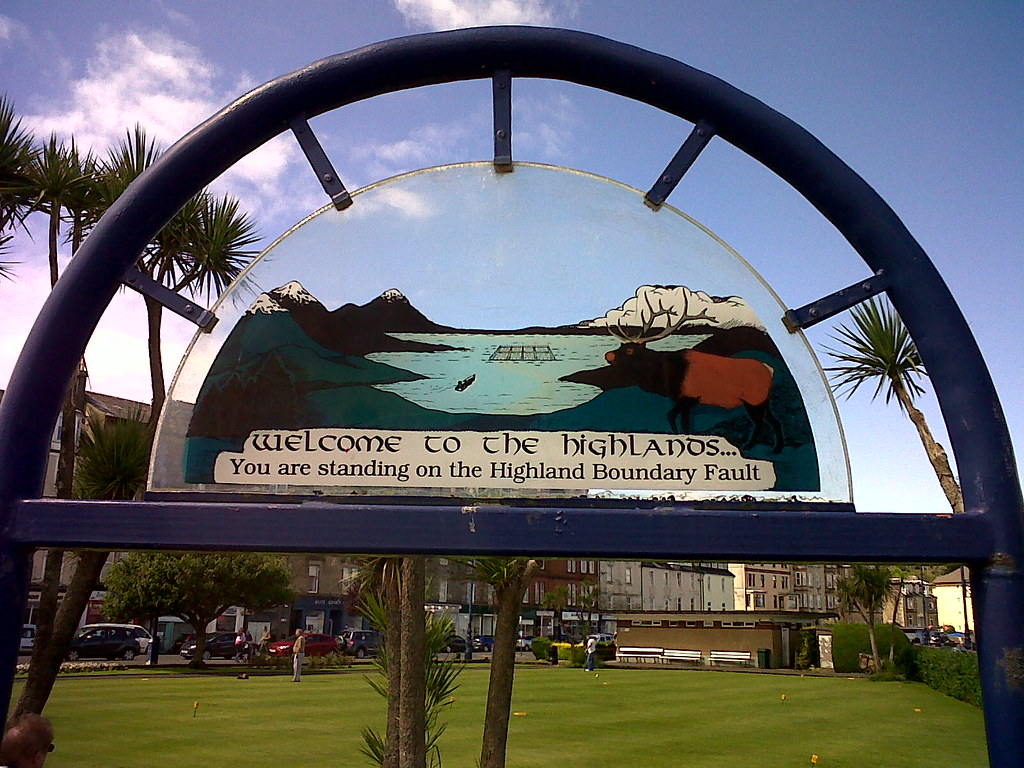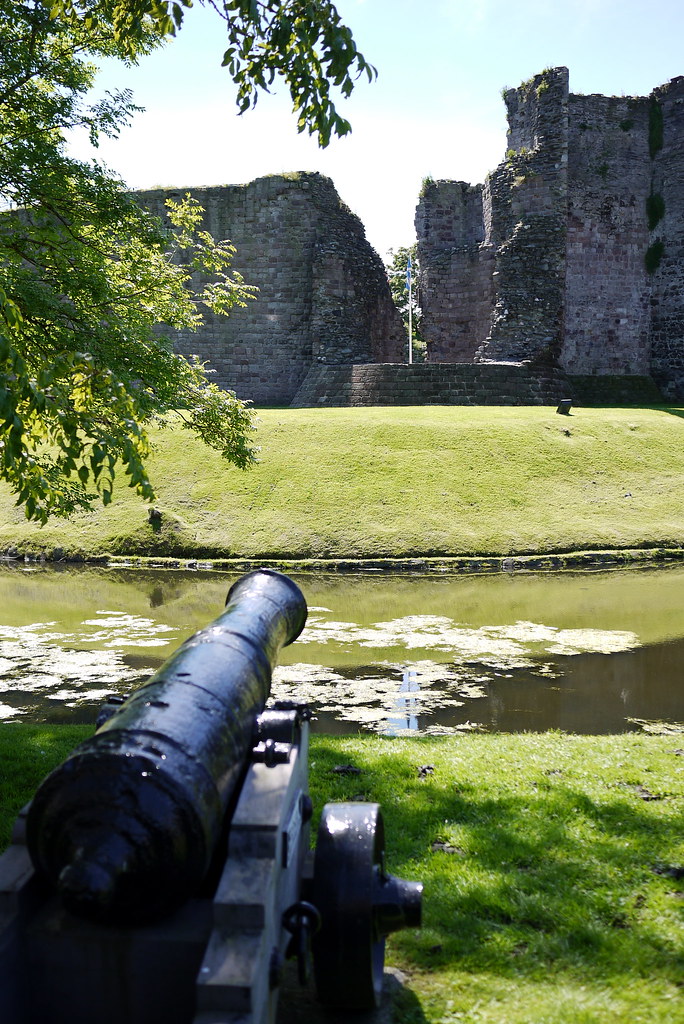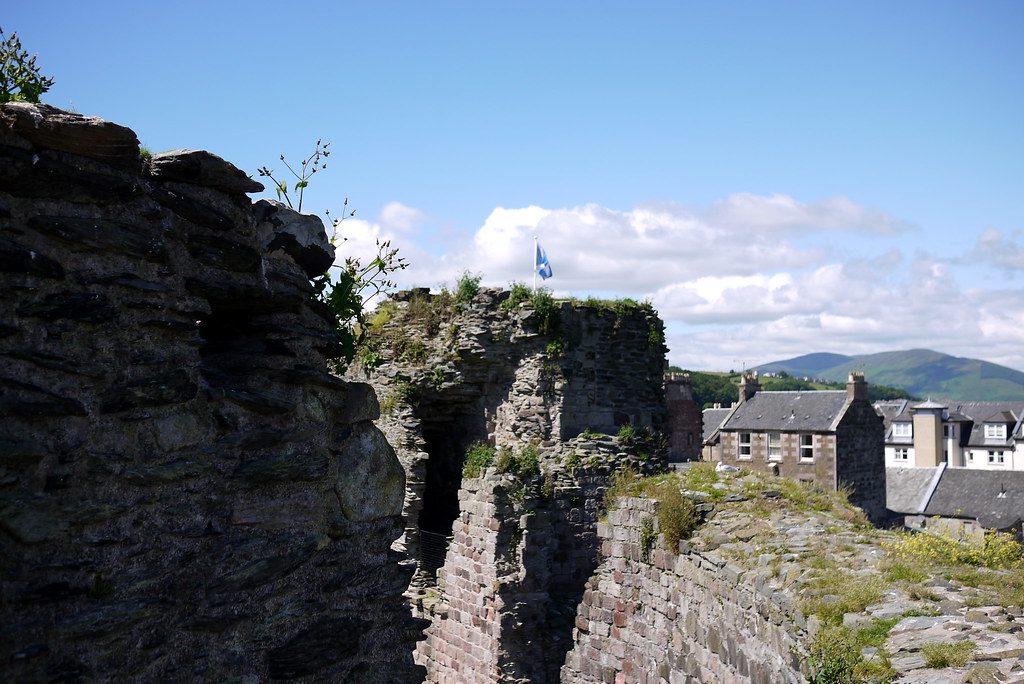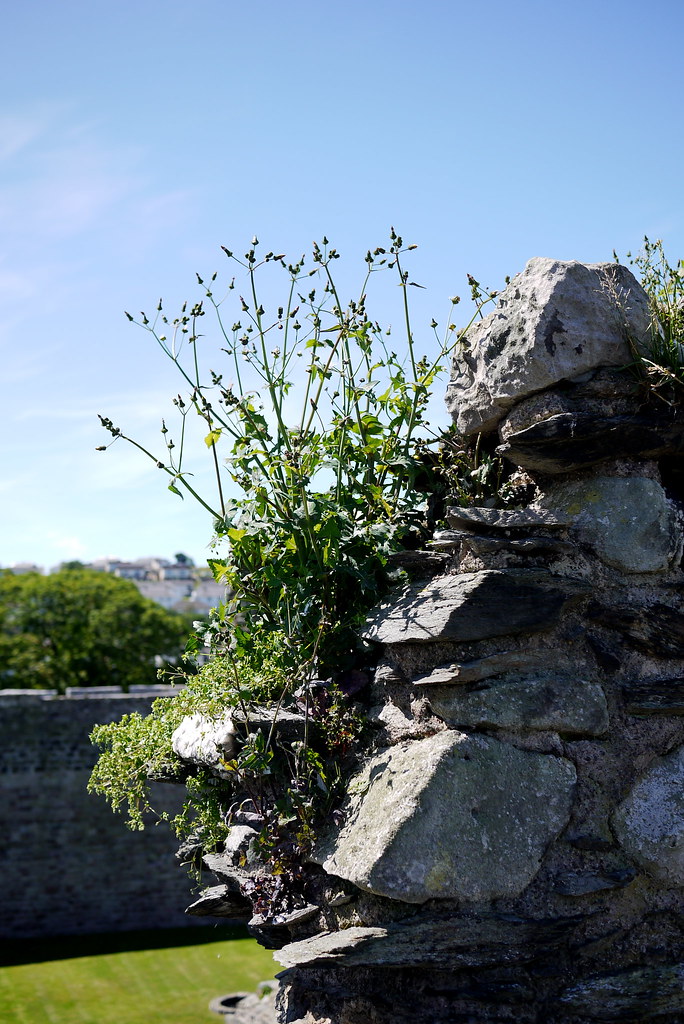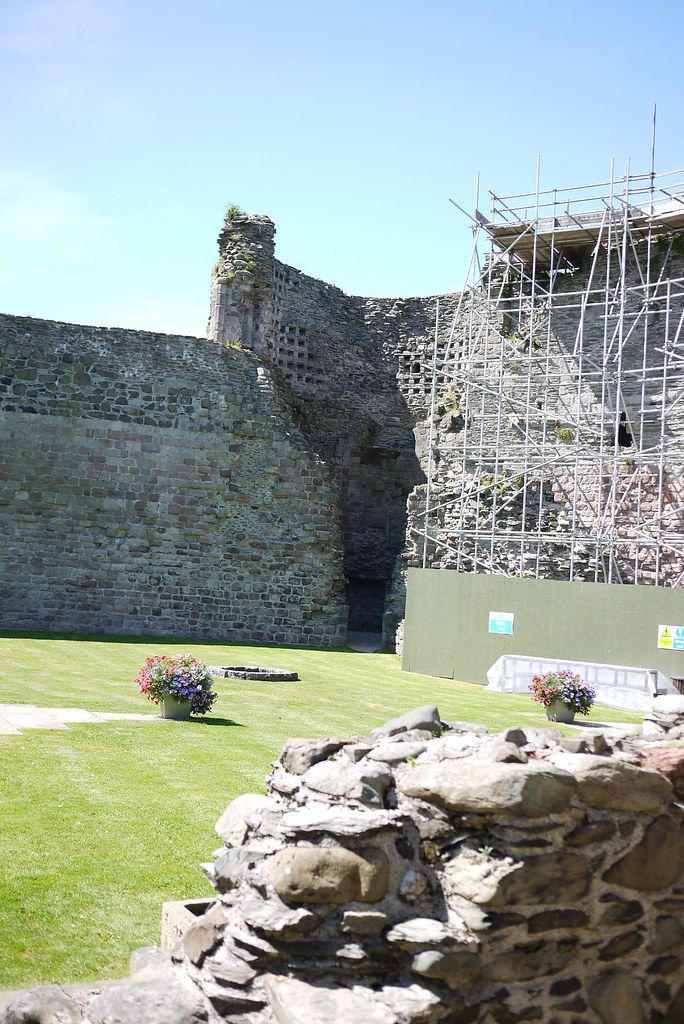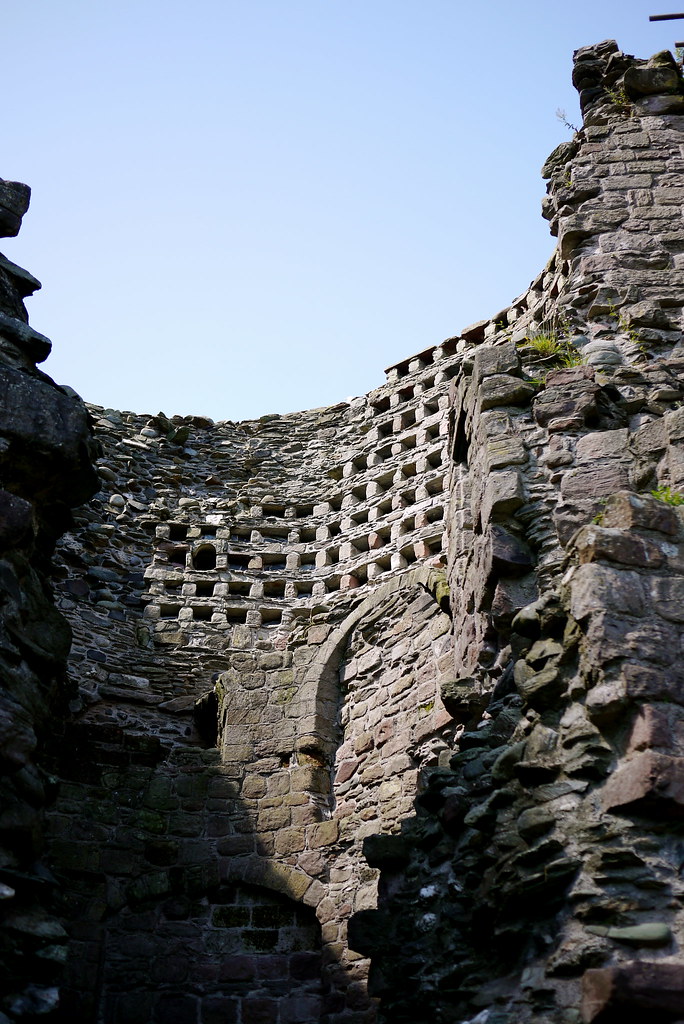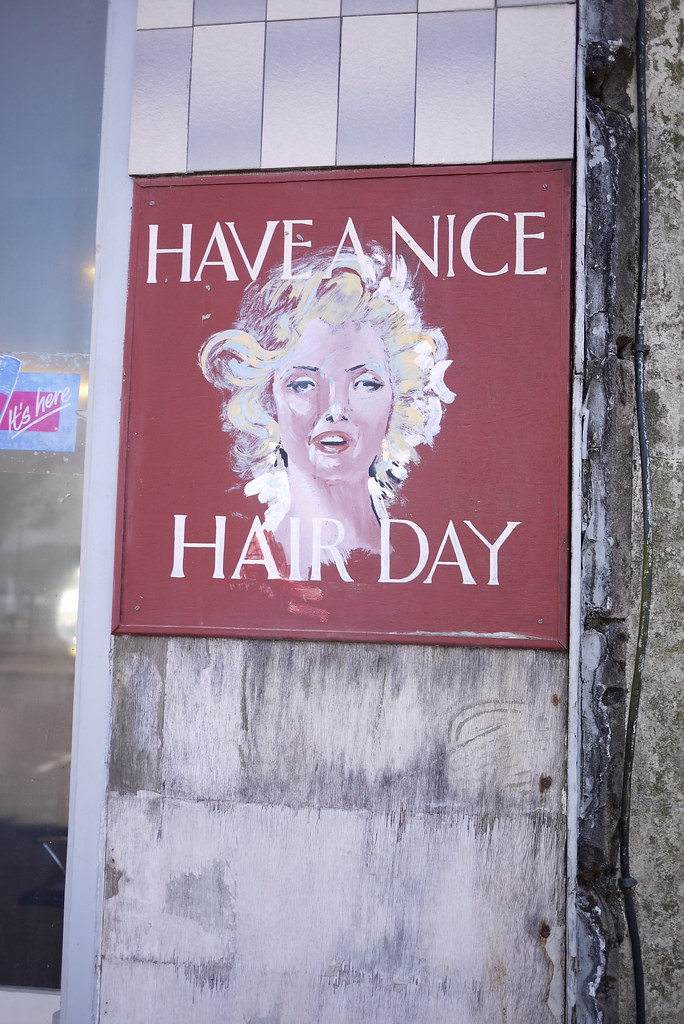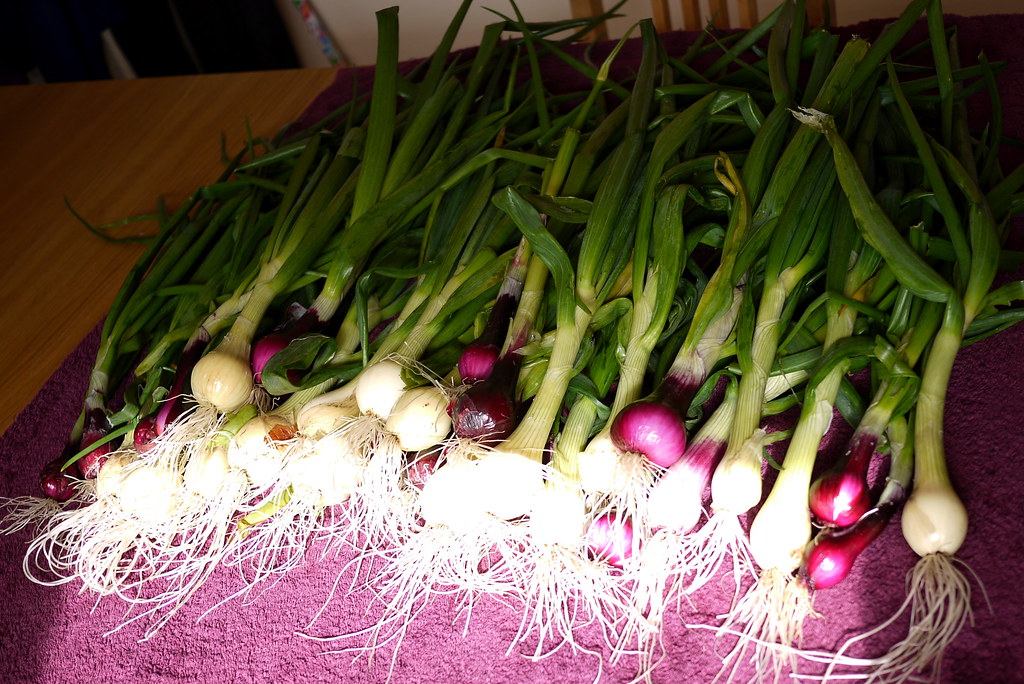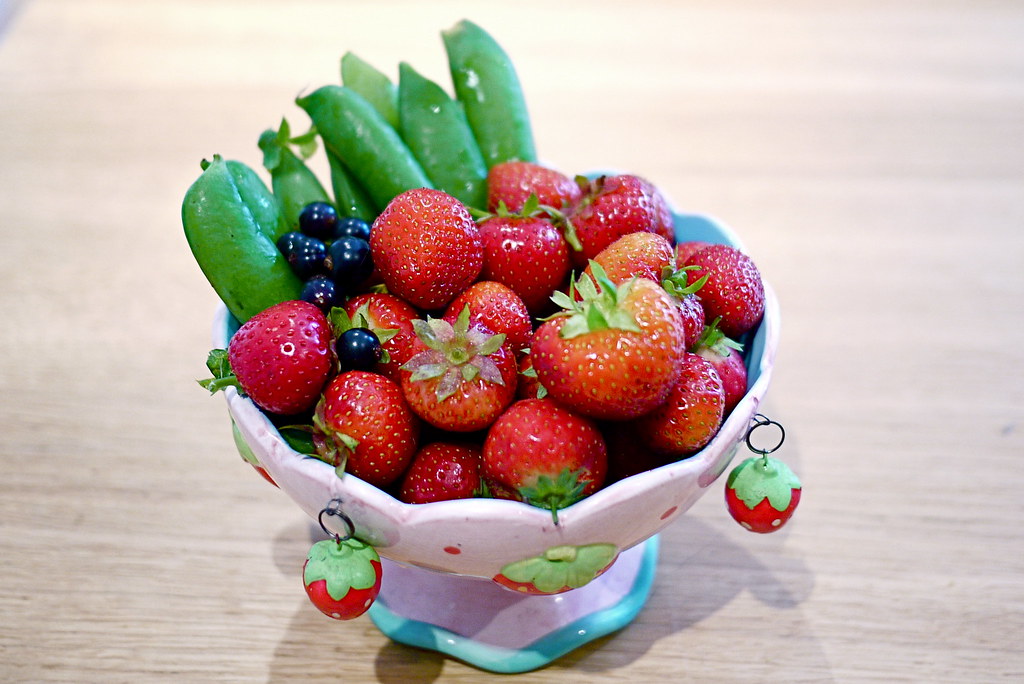It's been a while since I've done one of these and I'm not about to leave my spot on the sofa here anytime soon, so...Why not?
The Beliefs and Mythology of the Early Irish, With Special Reference to the Cosmos
Fergus Kelly
Astronomy, Cosmology, and Landscape: Proceedings of the Société Eurpéene pour L'Astronomie dans la Culture (2001)
Considering the scope of the title, I was expecting a huge and dense article here, but it's actually quite brief and light on detail or analysis. That's kind of disappointing to me, but as an overview at least it gives pointers to further reading, although it's probably quite telling that most of the references are very old - mostly from the early 1900s to the '60s. This article has the potential to fill a much-needed hole, then.
We begin with a bit of context - the astronomical alignments of many of the pre-Celtic monuments in Ireland, followed by a little commentary from Classical writers about the Gauls and mention of the Coligny calendar. Then we move back to Ireland and the possible cosmological significance of the decorations on the Turoe Stone in Co. Galway. Kelly concludes, "This was clearly an object of religious significance, and may have been associated with fertility." Which may or may not be a polite way of concluding it looks a bit like a penis.
We then move to examining the earliest written sources - evidence from St Patrick's Confessio, hagiographies (biographies of Saint's lives, that is), and legal texts - which mainly deal with the various references to druids. This is followed by looking at the myths, with some consideration of the names of certain deities and their cognates in Britain and Gaul, and noting the similarities between Caesar's comment on various deities covering certain roles, with how some gods like Dian Cécht, Badb (or Bodb), Goibniu and Crédine are said to have done the same.
Next there is a brief discussion of the connection between some supernatural figures and animals, and the observation that some deities are associated with specific localities, followed by mention of the four main festivals associated with the changing of the seasons. This is all well and good so far, but it's nothing that's particularly new or exciting, and nor does it really...go anywhere.
The latter part is perhaps the most interesting, dealing with the connection between astronomy and mythology, as well as astrology. Kelly says: "...the mythical seer Cormac mac Airt is represented as having in his youth been "a listener in the woods and a gazer at the stars." There is a native term mathmarc ("astrologer, augur") of uncertain etymology; it is attested in a text of the ninth century, but may be much earlier. Another Irish word for astrologer is néllaóir, a derivative of néll ("cloud"). Presumably, the shapes of the clouds suggested images from which the future could be foretold. In general, however, the surviving texts indicate that for the early Irish the world of the supernatural was a place to be entered through a fair mound or by passing through a fairy mist. Most frequently, it was represented as an island or group of islands in the Western Ocean. Consequently, we do not find an extensive vocabulary in the Irish language relating to celestial objects." (p169).
Kelly further notes that except for the Milky Way being known as Bóthar na Bó Finne ("the road of the white cow"), there are no known native words for planets or constellations to be found in early Irish texts. Although astronomy was widely studied in monasteries from around the eighth century or so, the names were all derived from Classical sources.
All in all, the article didn't really go in the directions I was anticipating. I was hoping for a bit on cosmogony, assumed there would be mention of the three realms, evidence for a possible cosmological divide between Darkness and Light, how the gods fit in to it all, the concept of the sacred centre, the bile and the omphalos (although the latter was kind of touched on with the Turoe Stone) and so on. Not so much! The stuff on astronomy and astrology is certainly interesting, but being half-way through Mark Williams' Fiery Shapes I'm perhaps a bit spoilt on that front already.
Saturday, 28 July 2012
Friday, 27 July 2012
The Táin more closely based on 'real life' than previously thought
Here's a story that would have made Kenneth Jackson smile, I'm sure...
Researchers have used mathematics to conclude that ancient Irish epic, Táin Bó Cúailnge, may be more closely based on real-life societies than previously thought.
The study takes a numerical look at how interactions between characters in the ancient Táin Bó Cúailnge compare with real social networks.
Maths is pretty anathema to me so I'll just nod and smile at the technical bits, but as per one of the comments on the article you can read the article here.
Wednesday, 25 July 2012
Mare stanes, adder stones, frog stones, oh my
Summer is definitely coming to an end, and it feels like the seasons are changing much earlier than usual this year. The leaves on horse chestnuts are already starting to turn reds and yellows, and some other trees around the place are changing too. The seaweed is coming up onto the beach in piles:
And the rainy weather is starting to get a bit of bite and fury to it.
Seeing as it was the first time I've managed to get to the beach since Midsummer, though, it was time to pay my respects to Manannán. As with previous years, Rosie insisted on finding a special stone. Last year she picked up a tiny heart-shaped stone with pink flecks in it; this year, she found a larger heart-shaped stone with white flecks in it. "Like a cow!" she decided. And so it was declared that it was obviously for us, because mummy likes cows.
As usual, the kids made a collection of stones and sea glass they liked, we built sandcastles and had a wee snack, took a turn over the rocks so I could make my offerings, and let the dogs run around mental and rescue sticks from the water (after four years, Mungo finally found the courage to go swimming and rescue a stick himself, even).
And while I was combing the beach, I found this:
Out of habit I tend to call them hag stones because that's what I've always known them as, but I suppose in order to be authentic I should call them mare stanes. They are stones typically found on the beach or river-bed, with a natural hole through them. A mare stane will keep away nightmares or being hag-ridden, if you hang them above your bed or wear one, and they are also a good preventative against disease or witchcraft, and are often found hanging in byres or stables to protect cattle and horses for the same purpose as people might hang them in the home, or wear them. McNeill doesn't have much to say about them, but she does note that stones of rock crystal (quartz) often had holes put through them to be worn about the neck as protection against the Evil Eye and witchcraft.
The Brahan Seer had a stone with a hole in the middle - the stone being described as white (or blue) and smooth - which is said to have been a gift from the daoine sìth. It is said that he could 'see things' if he looked through the hole; he could "see into the future as clearly as he could remember the past, and see men's designs and motives as clearly as their actions." Unfortunately for Coinneach Odhar, the Brahan Seer, things didn't work out so well for him. Apparently his accuracy as a seer meant that when he confirmed a lady's husband was away having an affair, she was so upset that she accused him of witchcraft. Before his execution, the Brahan Seer threw the stone into a loch after one final - and terrible - prophecy.
For some reason Wikipedia conflates them with adder stones, but I really don't think that's right. Every source I have lists them separately, with hag stones or mare stanes being any kind of rock with a natural hole in it from the beach or river, and adder stones (or clachan naithaireach as Black lists it, while John Gregorson Campbell and others give 'clach nathair') being somewhat mysterious in form and origin. Adder stones are usually described as being greenish in hue, and are believed to be some kind of secretion of adders, although Hugh Cheape, the former principal curator at the National Museum Scotland identifies them as simply being spindle-whorls, "lost or discarded and subsequently picked up." There are also such things as adder beads or glass (glaine nathair), and from the description Black gives, I would guess some of the adder beads are probably actual beads made from glass or enamel, that were found in the same way as the old spindle-whorls. Adder stones can offer protection against witchcraft as well, but are generally used for healing purposes. Gregorson Campbell describes them as "Of all the means of which superstition laid hold for the cure of disease in man or beast, the foremost place is to be assigned to the serpent stone (clach nathrach), also known as called the serpent bead or glass ((glaine nathair)." Unlike mare stanes, they don't offer protection from nightmares or being 'hag ridden,' but they are the go-to cure for snake bites in particular (the only potentially deadly snake in Britain being the adder), amongst more general cures.
There are also such things as snail beads (cnaipein silcheig) and frog or toad stones (clach nan gilleadha cràigein). The snail bead is said to be produced by the at least four snails who form them into a mass and somehow "manufacture" the stone between them and is described as being "a hollow Cilinder of blue Glass, composed of four or five Annulets: So that as to Form and Size it resembles a midling Entrochus." It can be used as a cure for sore eyes and breakouts of tetter on the mouth, but also serves to protect against danger. The frog stone, on the other hand, seems to have been a fossilised tooth known as bufonite, although popular belief held that it was formed in a frog or toad's head. Its main value was as a protection or antidote against poison.
I have a few mare stanes now so I might work the smallest of them into a charm I can wear; the one I found yesterday is way too big to wear - it seems to be a mixture of quartz and mica layers - so it's sat on my shelf at the moment. Maybe I'll hang it above the front door at some point, to keep my rowan company. The heart-shaped stones I seem to be collecting now might make good charm stones too; healing stones were often chosen for their shape, being sympathetic to whatever it was they were supposed to cure.
Further Reading:
George F. Black's Scottish Charms and Amulets
F. Marian McNeill's The Silver Bough Volume I: Scottish Folk-Lore and Folk-Belief
Ronald Black's The Gaelic Otherworld
Hugh Cheape's 'From Natural to Supernatural: The Material Culture of Charms and Amulets', in Fantastical Imaginations: The Supernatural in Scottish History and Culture, edited by Lizanne Henderson
And the rainy weather is starting to get a bit of bite and fury to it.
Seeing as it was the first time I've managed to get to the beach since Midsummer, though, it was time to pay my respects to Manannán. As with previous years, Rosie insisted on finding a special stone. Last year she picked up a tiny heart-shaped stone with pink flecks in it; this year, she found a larger heart-shaped stone with white flecks in it. "Like a cow!" she decided. And so it was declared that it was obviously for us, because mummy likes cows.
As usual, the kids made a collection of stones and sea glass they liked, we built sandcastles and had a wee snack, took a turn over the rocks so I could make my offerings, and let the dogs run around mental and rescue sticks from the water (after four years, Mungo finally found the courage to go swimming and rescue a stick himself, even).
And while I was combing the beach, I found this:
Out of habit I tend to call them hag stones because that's what I've always known them as, but I suppose in order to be authentic I should call them mare stanes. They are stones typically found on the beach or river-bed, with a natural hole through them. A mare stane will keep away nightmares or being hag-ridden, if you hang them above your bed or wear one, and they are also a good preventative against disease or witchcraft, and are often found hanging in byres or stables to protect cattle and horses for the same purpose as people might hang them in the home, or wear them. McNeill doesn't have much to say about them, but she does note that stones of rock crystal (quartz) often had holes put through them to be worn about the neck as protection against the Evil Eye and witchcraft.
The Brahan Seer had a stone with a hole in the middle - the stone being described as white (or blue) and smooth - which is said to have been a gift from the daoine sìth. It is said that he could 'see things' if he looked through the hole; he could "see into the future as clearly as he could remember the past, and see men's designs and motives as clearly as their actions." Unfortunately for Coinneach Odhar, the Brahan Seer, things didn't work out so well for him. Apparently his accuracy as a seer meant that when he confirmed a lady's husband was away having an affair, she was so upset that she accused him of witchcraft. Before his execution, the Brahan Seer threw the stone into a loch after one final - and terrible - prophecy.
For some reason Wikipedia conflates them with adder stones, but I really don't think that's right. Every source I have lists them separately, with hag stones or mare stanes being any kind of rock with a natural hole in it from the beach or river, and adder stones (or clachan naithaireach as Black lists it, while John Gregorson Campbell and others give 'clach nathair') being somewhat mysterious in form and origin. Adder stones are usually described as being greenish in hue, and are believed to be some kind of secretion of adders, although Hugh Cheape, the former principal curator at the National Museum Scotland identifies them as simply being spindle-whorls, "lost or discarded and subsequently picked up." There are also such things as adder beads or glass (glaine nathair), and from the description Black gives, I would guess some of the adder beads are probably actual beads made from glass or enamel, that were found in the same way as the old spindle-whorls. Adder stones can offer protection against witchcraft as well, but are generally used for healing purposes. Gregorson Campbell describes them as "Of all the means of which superstition laid hold for the cure of disease in man or beast, the foremost place is to be assigned to the serpent stone (clach nathrach), also known as called the serpent bead or glass ((glaine nathair)." Unlike mare stanes, they don't offer protection from nightmares or being 'hag ridden,' but they are the go-to cure for snake bites in particular (the only potentially deadly snake in Britain being the adder), amongst more general cures.
There are also such things as snail beads (cnaipein silcheig) and frog or toad stones (clach nan gilleadha cràigein). The snail bead is said to be produced by the at least four snails who form them into a mass and somehow "manufacture" the stone between them and is described as being "a hollow Cilinder of blue Glass, composed of four or five Annulets: So that as to Form and Size it resembles a midling Entrochus." It can be used as a cure for sore eyes and breakouts of tetter on the mouth, but also serves to protect against danger. The frog stone, on the other hand, seems to have been a fossilised tooth known as bufonite, although popular belief held that it was formed in a frog or toad's head. Its main value was as a protection or antidote against poison.
I have a few mare stanes now so I might work the smallest of them into a charm I can wear; the one I found yesterday is way too big to wear - it seems to be a mixture of quartz and mica layers - so it's sat on my shelf at the moment. Maybe I'll hang it above the front door at some point, to keep my rowan company. The heart-shaped stones I seem to be collecting now might make good charm stones too; healing stones were often chosen for their shape, being sympathetic to whatever it was they were supposed to cure.
Further Reading:
George F. Black's Scottish Charms and Amulets
F. Marian McNeill's The Silver Bough Volume I: Scottish Folk-Lore and Folk-Belief
Ronald Black's The Gaelic Otherworld
Hugh Cheape's 'From Natural to Supernatural: The Material Culture of Charms and Amulets', in Fantastical Imaginations: The Supernatural in Scottish History and Culture, edited by Lizanne Henderson
Sunday, 22 July 2012
Traditional Songs
This is a new website by the looks of things, listing a collection of popular Irish songs, some with translation, and most with videos to a selection of versions.
Songs in Irish
Hopefully the listings and translations will be expanded in due course, but what's there is looking good so far. Some of my personal favourites such as Cailleach An Airgid (Sí Do Mhaimeo Í), 'The Hag With The Money', and Óró Sé do Bheatha 'Bhaile, 'Oh-ro, You're Welcome Home,' which Kathryn happens to have posted about just yesterday are there.
Music and song is an important part of any culture and I think most people agree that songs are a good accompaniment to any celebration or occasion (Gaol Naofa has some suggestions, incidentally). Every song tells a story, from the songs about rebellion, lost love, and even the more non-sensical ones like this one (which I learned in my first year of Gàidhlig lessons):
Examples like this have their roots in cultural oppression and colonialism, when musical instruments were banned and the puirt-à-beul, or 'mouth music', was the only alternative, using the lyrics themselves to lead the beat and rhythm of the song, without instrumental accompaniment. Often the lyrics don't make much sense except to fit the rhythm and beat of the tune, but even when they're otherwise 'nonsense' songs, they're mark of their time. Some people find they're a good way to learn the language, too - they're certainly an accessible way to listen to pronunciation!
These are the kind of stories that are woven into a culture, making it what it is. It's good to see that there's still an interest out there.
Songs in Irish
Hopefully the listings and translations will be expanded in due course, but what's there is looking good so far. Some of my personal favourites such as Cailleach An Airgid (Sí Do Mhaimeo Í), 'The Hag With The Money', and Óró Sé do Bheatha 'Bhaile, 'Oh-ro, You're Welcome Home,' which Kathryn happens to have posted about just yesterday are there.
Music and song is an important part of any culture and I think most people agree that songs are a good accompaniment to any celebration or occasion (Gaol Naofa has some suggestions, incidentally). Every song tells a story, from the songs about rebellion, lost love, and even the more non-sensical ones like this one (which I learned in my first year of Gàidhlig lessons):
Tha bean agam, tha taigh agam, Tha allt aig ceann an taigh' agam, Tha punnd de shiabann geal agam 'S mo lèine salach grànnda. Dè nì mi gun lèine ghlan, gun lèine gheal, Gun lèine ghlan? Dè nì mi gun lèine ghlan, 'S mi falbh on taigh a-màireach? | I have a wife, I have a house There's a stream by the end of my house I have a lump of white soap And my shirt is really dirty! What will I do for a clean shirt, For a clean, white shirt? What will I do for a clean shirt When I want to go out tomorrow? |
See here for more.
Examples like this have their roots in cultural oppression and colonialism, when musical instruments were banned and the puirt-à-beul, or 'mouth music', was the only alternative, using the lyrics themselves to lead the beat and rhythm of the song, without instrumental accompaniment. Often the lyrics don't make much sense except to fit the rhythm and beat of the tune, but even when they're otherwise 'nonsense' songs, they're mark of their time. Some people find they're a good way to learn the language, too - they're certainly an accessible way to listen to pronunciation!
These are the kind of stories that are woven into a culture, making it what it is. It's good to see that there's still an interest out there.
Friday, 13 July 2012
To Rothesay
Yesterday the weather finally decided not to suck, hurrah! So in celebration, and for the sake of something to do with the kids while they're on their summer holidays, I decided it was time to take a trip over to Bute. For once, I figured, we might enjoy it while the whether wasn't dull and dour (and it was a good excuse to keep the kids out of the way while a very nice man put a new fence in, courtesy of our very generous neighbours who wanted to dog-proof their garden for their new puppy).
Armed with a plethora of food and a flask of coffee for a picnic by the sea, the kids and I went down to the ferry just in time for the midday sailing. We went up to the top deck and enjoyed the sunshine and breezes, while the kids looked out into the sea to see what they could see:
That's the view of the side of the river I live on. Out to sea, on a good day, you can just make out the Ailsa Craig, where the special granite used for curling stones come from (my mother-in-law is a keen...curler?...herself). It's currently up for sale, if you have a spare million and then some lying around.
We were given a warm welcome with a young lady playing the bagpipes (and she was actually good!) and bilingual signage:
Which I don't remember seeing before. It wasn't the only Gàidhlig signage so it's heartening to see the council taking the language more seriously. And talking of signage:
We took a short walk from the ferry so we could officially have lunch in the Highlands, before going down on to the beach in search of treasure. The while we had lunch...well...it wasn't bad:
And then, once Rosie had her nice collection of sea glass, Tom had secured the beach from Decepticons (apparently), and I'd made some offerings, we went off to Rothesay Castle. I took some pictures of the outside last year when a friend and I had a day trip there (in considerably murkier weather), but it's amazing the difference a bit of sunshine makes to a place. Tom was particularly impressed by the canon outside the castle, which is conveniently aimed at where the curtain wall is damaged:
He ended up getting himself a canon pencil sharpener from the gift shop on our way out, which is currently being used to demolish a Lego castle to devastating effect. Near the canon were some baby swans, with mum and dad:
Mum and dad weren't too keen on all the attention the adolescent swans were getting, so I was glad there was a wall in the way, for sure. Having been mugged by a swan some years ago in Linlithgow, I know first hand that they can be quite terrifying buggers even when they don't have offspring to be looking after and they're just after the bread they know is in that bag there...
The castle itself is in a very ruined state and there's not much that can be climbed up at the moment - they're doing a lot of work on it. The gatehouse survives in fairly good condition and the first time I visited, some years ago now, the great hall there was being prepared for a wedding. It's a very grand setting.
The main part of castle itself is roughly circular, and originally had four round towers at each corner. Only two of the towers are still in much of a shape:
One of them was used for keeping pigeons as well:
Inside the curtain wall were several buildings, but only the chapel survives substantially:
After we'd left we had a bit of time to kill before the next ferry home so we took a stroll around the town and visited a few shops. The town itself has certainly seen better days and it has a very shabby sort of splendour to it. The lampposts are great, though:
Returning to the subject of signage, however, I can't help but feel that this one is sending something of a conflicting message:
My mother will be coming to visit at the end of the month and wants to take the ferry over for a visit, to go and see the Mount Stuart estate as my friend and I did last October. I do hope the weather will be as nice as it was yesterday. We might end up taking the tour bus so we can see a bit more of the island as well - taking the car over is expensive but the island is beautiful and well worth exploring. Hopefully I'll have some good pictures then, too.
Armed with a plethora of food and a flask of coffee for a picnic by the sea, the kids and I went down to the ferry just in time for the midday sailing. We went up to the top deck and enjoyed the sunshine and breezes, while the kids looked out into the sea to see what they could see:
That's the view of the side of the river I live on. Out to sea, on a good day, you can just make out the Ailsa Craig, where the special granite used for curling stones come from (my mother-in-law is a keen...curler?...herself). It's currently up for sale, if you have a spare million and then some lying around.
We were given a warm welcome with a young lady playing the bagpipes (and she was actually good!) and bilingual signage:
Which I don't remember seeing before. It wasn't the only Gàidhlig signage so it's heartening to see the council taking the language more seriously. And talking of signage:
We took a short walk from the ferry so we could officially have lunch in the Highlands, before going down on to the beach in search of treasure. The while we had lunch...well...it wasn't bad:
And then, once Rosie had her nice collection of sea glass, Tom had secured the beach from Decepticons (apparently), and I'd made some offerings, we went off to Rothesay Castle. I took some pictures of the outside last year when a friend and I had a day trip there (in considerably murkier weather), but it's amazing the difference a bit of sunshine makes to a place. Tom was particularly impressed by the canon outside the castle, which is conveniently aimed at where the curtain wall is damaged:
He ended up getting himself a canon pencil sharpener from the gift shop on our way out, which is currently being used to demolish a Lego castle to devastating effect. Near the canon were some baby swans, with mum and dad:
Mum and dad weren't too keen on all the attention the adolescent swans were getting, so I was glad there was a wall in the way, for sure. Having been mugged by a swan some years ago in Linlithgow, I know first hand that they can be quite terrifying buggers even when they don't have offspring to be looking after and they're just after the bread they know is in that bag there...
The castle itself is in a very ruined state and there's not much that can be climbed up at the moment - they're doing a lot of work on it. The gatehouse survives in fairly good condition and the first time I visited, some years ago now, the great hall there was being prepared for a wedding. It's a very grand setting.
The main part of castle itself is roughly circular, and originally had four round towers at each corner. Only two of the towers are still in much of a shape:
One of them was used for keeping pigeons as well:
Inside the curtain wall were several buildings, but only the chapel survives substantially:
After we'd left we had a bit of time to kill before the next ferry home so we took a stroll around the town and visited a few shops. The town itself has certainly seen better days and it has a very shabby sort of splendour to it. The lampposts are great, though:
Returning to the subject of signage, however, I can't help but feel that this one is sending something of a conflicting message:
My mother will be coming to visit at the end of the month and wants to take the ferry over for a visit, to go and see the Mount Stuart estate as my friend and I did last October. I do hope the weather will be as nice as it was yesterday. We might end up taking the tour bus so we can see a bit more of the island as well - taking the car over is expensive but the island is beautiful and well worth exploring. Hopefully I'll have some good pictures then, too.
Thursday, 12 July 2012
Onions! Onions everywhere!
Over the past month or so I've been kind of neglecting the garden a little; bad Seren. There's not much I can do about that, though, I'm just haven't been physically up to it.
Even so, I hadn't anticipated the onions being ready so soon. I tried planting bulbs this year, instead of growing from seed like previous years and I have to say things turned out very well. A little too well perhaps:
That's just the first batch I pulled...There weren't quite as many in the second batch but there are still more than enough! Although I spaced the planting every couple of weeks to make sure I staggered the harvesting, because I left them in too long (some have gone to seed) they're pretty much all ready right now. Some of the bulbs that were crowded or took longer to shoot are still in, and there's still a good harvest to come. But right now I have an embarrassment of onions sat in my fridge and I don't really know what the hell to do with them. They seem to be keeping well so far so there isn't too much of a rush to use them up, but I'm keeping an eye on them just in case. I don't want them to go to waste.
The strawberries are ripening as well, coming through in dribs and drabs. They're so much tastier than the ones in the shops, tart and full of flavour. We've had some blackcurrants and peas too:
Peas! The blackcurrant will take a few more seasons before we get much of a crop, I think. With only a few blackcurrants amongst the strawberries I decided to make:
Ice lollies! Yeah, I'm not sure even Tom has any idea what Rosie's on either. I swear it's nothing I put into lollies.
Even so, I hadn't anticipated the onions being ready so soon. I tried planting bulbs this year, instead of growing from seed like previous years and I have to say things turned out very well. A little too well perhaps:
That's just the first batch I pulled...There weren't quite as many in the second batch but there are still more than enough! Although I spaced the planting every couple of weeks to make sure I staggered the harvesting, because I left them in too long (some have gone to seed) they're pretty much all ready right now. Some of the bulbs that were crowded or took longer to shoot are still in, and there's still a good harvest to come. But right now I have an embarrassment of onions sat in my fridge and I don't really know what the hell to do with them. They seem to be keeping well so far so there isn't too much of a rush to use them up, but I'm keeping an eye on them just in case. I don't want them to go to waste.
The strawberries are ripening as well, coming through in dribs and drabs. They're so much tastier than the ones in the shops, tart and full of flavour. We've had some blackcurrants and peas too:
Peas! The blackcurrant will take a few more seasons before we get much of a crop, I think. With only a few blackcurrants amongst the strawberries I decided to make:
Ice lollies! Yeah, I'm not sure even Tom has any idea what Rosie's on either. I swear it's nothing I put into lollies.
Thursday, 5 July 2012
Laa Tinvaal
A happy Laa Tinvaal to you all: It's Tynwald Day on the Isle of Man today, and for me it heralds the close of the Midsummer festivities. As last year, the BBC are live-streaming the celebrations, which sees a great procession to the church of St John the Baptist, where a service is held, and parliament is held in the open air, where the laws enacted by Manx parliament in the previous year are read out in both Manx and English.
According to the Beeb the celebrations this year include a focus on Manx history and culture for young people:
National Day celebrations in the Isle of Man will focus on giving youngsters the chance to learn something new, the president of Tynwald has said.
Clare Christian said Tynwald Day activities included music sessions and circus workshops in acrobatics and tightrope walking.
Local artists will also run a series of classes on Manx music and art.
Mrs Christian said: "The emphasis is firmly on young people with exciting opportunities."
No specific mention of language I notice; such a shame. Sadly not surprising, though.
Sunday, 1 July 2012
Book review: The Cult of the Sacred Centre: Essays on Celtic Ideology
A book review now. This is one of the library books I got a while back, and it's been recalled by another user so it has to go back tomorrow. It means I've not been able to go over it as thoroughly as I'd normally like, but enough for a fairly basic review, I think.
The Cult of the Sacred Centre: Essays on Celtic Ideology
Proinsias Mac Cana
I think it's safe to say that Mac Cana contributed a huge amount to Celtic Studies during his lifetime, and this book (a collection of some otherwise unpublished articles that have been put together posthumously) carries on that legacy. Mac Cana had been in the process of finalising the collation of these articles into a book just as he died in 2004, but nonetheless it took some time for the volume to be completed by former colleagues and family members so it only came out last year in 2011.
There are a lot of articles here covering a wide variety of subjects, but over all the book comes together and deals with the same themes: the idea of political, geographical and cultural unity amongst the various Celtic peoples. This might be enough to make your eyes glaze over at the mere thought of that kind of thing, but trust me on this. Stick with it.
Most of the Celtic focus is on the Irish side of things but there are some essays that concentrate on Brythonic and Gaulish evidence. However, a large portion of the book (part two of four sections) deals with comparative evidence - "The Sacred Centre in Comparative Traditions." I have to admit I was somewhat disappointed in that at first because this section held a lot of the chapters that I was most interested in to start with (e.g. 'Ritual Circumambulation', 'The Centre and the Four Quarters' to name but a few), and many of them seemed to deal with hardly anything "Celtic" at all at first glance. I was hoping for something a little more focused and rooted, but once I got through each chapter I was able to appreciate what Mac Cana was aiming for a little more. The comparative approach does help to put a lot of things in context, although I still have reservations about it (and mild disappointment at the lack of Celtic evidence given in some parts. Compared to what I'd hoped for, at least).
The comparisons can sometimes take a very broad approach as well, referring tangentially to many different cultures beyond the Indo-European family. It's this kind of thing that gives me the greatest pause, because while the Indo-European cultures do share some commonalities, beyond that I can't help but feel the scope becomes a little too broad. It would have been nice to see a more critical view of the advantages and disadvantages of comparative methodology as well, throughout the section. And while I'm not particularly expert in what's considered PC or not in terms of anthropological issues these days, I'm fairly sure the use of labels like "pygmies" is becoming questionable in some quarters, at least. While things like this might seem like a minor detail, it became more than a little distracting.
My reservations aside, there's a lot of good stuff to be found here as well. Although veering a little too deeply into comparative territory for my tastes at times I certainly did learn a lot about the kind of theoretics and symbolism behind much of what we can see of Celtic ritual practices as a whole - circumambulation, the omphalos, the ritualised expression of Celtic ideas of cultural or political unity, how it all ties in with the land and the people, and so on. I would say those kinds of things alone are invaluable, and there are also some good essays on the (Irish) literary tradition, the concept of 'unity' and nationality in Irish history and literature, sacral kingship (one of the subjects that Mac Cana is well known for), as well as the laws and placenames of Ireland. You might know a lot of it already (especially if you've read the Rees brothers' Celtic Heritage), but the essays do bring together each subject quite neatly. There's plenty of good stuff for those who are more interested in things Gaulish, as well, but while there are chapters on England and Wales, as well as Brittany, these definitely aren't as much of a major concern. Ireland and Gaul are the main focus, with a definite emphasis on Ireland.
It's all very dense and perhaps a little too in-depth and academic (i.e. dry...) for some, and I have to say that some of Teh Big Wurdz left me having to look them up to see what they meant. It can make for some sentences that take some time to unravel and I'm not sure it's really necessary, but it's a minor annoyance at best. I did notice, however, that while the book is well-referenced, there isn't much in the way of particularly recent references given; obviously given the fact that Mac Cana died some years ago and began working on the articles some years before that (1996 onwards), that's perhaps not surprising, but it does make me wonder if there's work out there that is more up to date. Not that the past decade or two is so out of date that it makes the book irrelevant (especially considering how old most of the books we work with are), I hasten to add, but it's maybe something to bear in mind. Mac Cana's book will surely have the advantage of being more comprehensive than any articles that might be lurking in journals, for sure.
All in all it's not something that will appeal to a lot of folks, and I certainly wouldn't recommend it to beginners, but given the perspectives the book allows you to chew over - whether you agree with them or not - I'd say the book is well worth splurging on. A major downside if you just want this book for research purposes, to pick through rather than to read, is that there's no index. You should be able to find what you want just by the chapter titles alone in most cases, but there are some hidden gems that might be missed unless you give the book a thorough going over. Otherwise, this is one I'd certainly like to have for the bookshelf someday.
The Cult of the Sacred Centre: Essays on Celtic Ideology
Proinsias Mac Cana
I think it's safe to say that Mac Cana contributed a huge amount to Celtic Studies during his lifetime, and this book (a collection of some otherwise unpublished articles that have been put together posthumously) carries on that legacy. Mac Cana had been in the process of finalising the collation of these articles into a book just as he died in 2004, but nonetheless it took some time for the volume to be completed by former colleagues and family members so it only came out last year in 2011.
There are a lot of articles here covering a wide variety of subjects, but over all the book comes together and deals with the same themes: the idea of political, geographical and cultural unity amongst the various Celtic peoples. This might be enough to make your eyes glaze over at the mere thought of that kind of thing, but trust me on this. Stick with it.
Most of the Celtic focus is on the Irish side of things but there are some essays that concentrate on Brythonic and Gaulish evidence. However, a large portion of the book (part two of four sections) deals with comparative evidence - "The Sacred Centre in Comparative Traditions." I have to admit I was somewhat disappointed in that at first because this section held a lot of the chapters that I was most interested in to start with (e.g. 'Ritual Circumambulation', 'The Centre and the Four Quarters' to name but a few), and many of them seemed to deal with hardly anything "Celtic" at all at first glance. I was hoping for something a little more focused and rooted, but once I got through each chapter I was able to appreciate what Mac Cana was aiming for a little more. The comparative approach does help to put a lot of things in context, although I still have reservations about it (and mild disappointment at the lack of Celtic evidence given in some parts. Compared to what I'd hoped for, at least).
The comparisons can sometimes take a very broad approach as well, referring tangentially to many different cultures beyond the Indo-European family. It's this kind of thing that gives me the greatest pause, because while the Indo-European cultures do share some commonalities, beyond that I can't help but feel the scope becomes a little too broad. It would have been nice to see a more critical view of the advantages and disadvantages of comparative methodology as well, throughout the section. And while I'm not particularly expert in what's considered PC or not in terms of anthropological issues these days, I'm fairly sure the use of labels like "pygmies" is becoming questionable in some quarters, at least. While things like this might seem like a minor detail, it became more than a little distracting.
My reservations aside, there's a lot of good stuff to be found here as well. Although veering a little too deeply into comparative territory for my tastes at times I certainly did learn a lot about the kind of theoretics and symbolism behind much of what we can see of Celtic ritual practices as a whole - circumambulation, the omphalos, the ritualised expression of Celtic ideas of cultural or political unity, how it all ties in with the land and the people, and so on. I would say those kinds of things alone are invaluable, and there are also some good essays on the (Irish) literary tradition, the concept of 'unity' and nationality in Irish history and literature, sacral kingship (one of the subjects that Mac Cana is well known for), as well as the laws and placenames of Ireland. You might know a lot of it already (especially if you've read the Rees brothers' Celtic Heritage), but the essays do bring together each subject quite neatly. There's plenty of good stuff for those who are more interested in things Gaulish, as well, but while there are chapters on England and Wales, as well as Brittany, these definitely aren't as much of a major concern. Ireland and Gaul are the main focus, with a definite emphasis on Ireland.
It's all very dense and perhaps a little too in-depth and academic (i.e. dry...) for some, and I have to say that some of Teh Big Wurdz left me having to look them up to see what they meant. It can make for some sentences that take some time to unravel and I'm not sure it's really necessary, but it's a minor annoyance at best. I did notice, however, that while the book is well-referenced, there isn't much in the way of particularly recent references given; obviously given the fact that Mac Cana died some years ago and began working on the articles some years before that (1996 onwards), that's perhaps not surprising, but it does make me wonder if there's work out there that is more up to date. Not that the past decade or two is so out of date that it makes the book irrelevant (especially considering how old most of the books we work with are), I hasten to add, but it's maybe something to bear in mind. Mac Cana's book will surely have the advantage of being more comprehensive than any articles that might be lurking in journals, for sure.
All in all it's not something that will appeal to a lot of folks, and I certainly wouldn't recommend it to beginners, but given the perspectives the book allows you to chew over - whether you agree with them or not - I'd say the book is well worth splurging on. A major downside if you just want this book for research purposes, to pick through rather than to read, is that there's no index. You should be able to find what you want just by the chapter titles alone in most cases, but there are some hidden gems that might be missed unless you give the book a thorough going over. Otherwise, this is one I'd certainly like to have for the bookshelf someday.
Subscribe to:
Posts (Atom)





